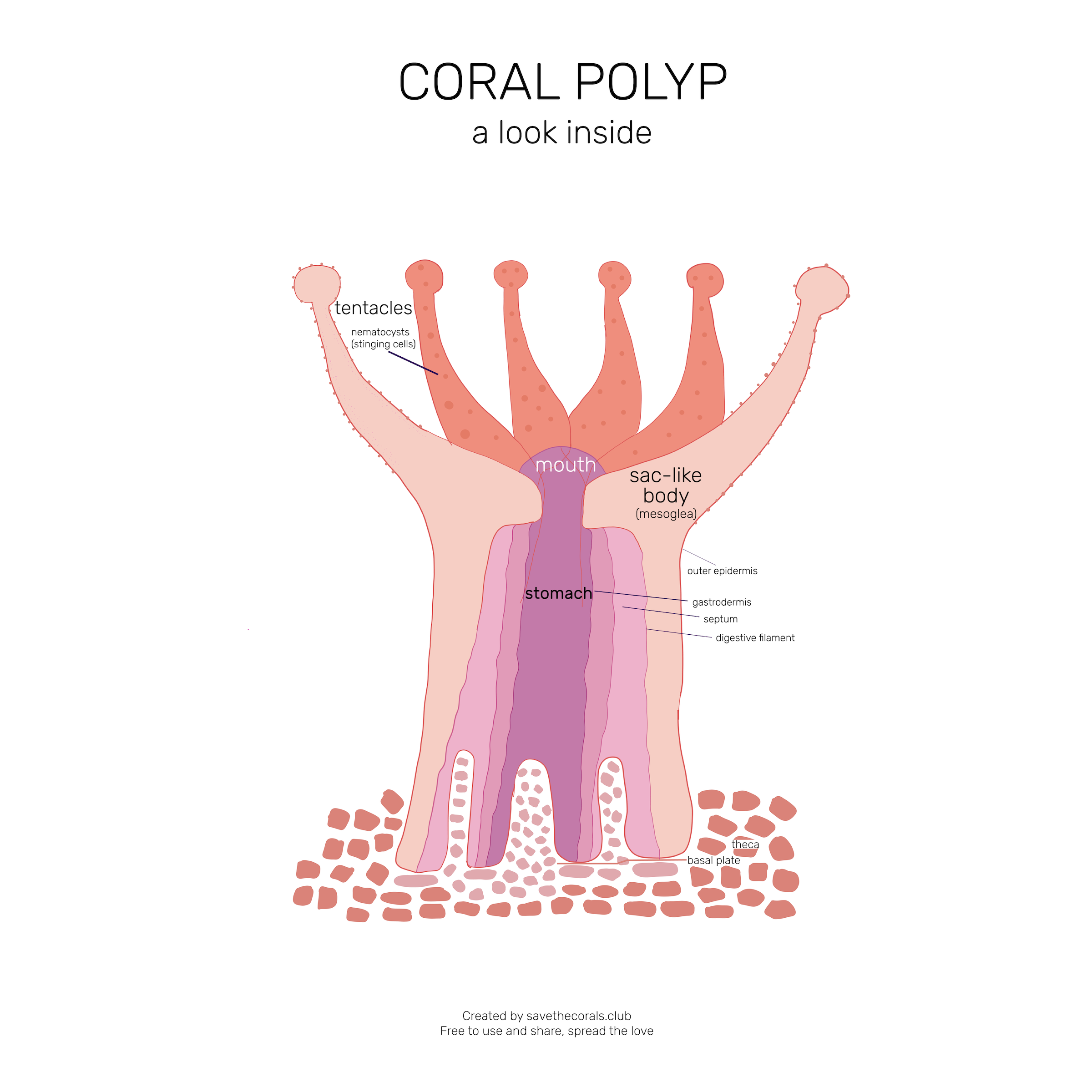Millions of years ago…
Tiny polyps were floating in the ocean.
With only a mouth and tentacles, they don’t have much chance of survival in the open water.
Luckily, they have many superpowers, and other organisms working with them, enabling them to create the underwater habitat supporting billions of species.
The tiny polyps are able to attach to hard surfaces, such as rocks, building a skeleton to stay rooted in their home.
There, the polyp divides, or buds, into thousands of clones, creating a colony of polly’s to work together and build.
Through the coenosarc, the polyps connect to one another, sharing nutrients, and forming a colony that acts as a single organism.
As colonies grow over hundreds and thousands of years, they join with other colonies to become reefs.
Some of the coral reefs on the planet today started growing over 50 million years ago (National Geographic).


















